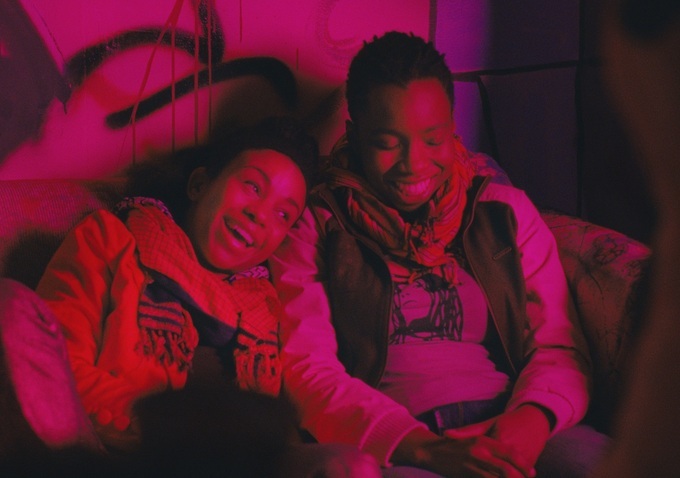STUDY HALL: Color Theory for Filmmakers

(Above: Scene from Dee Reese’s Pariah as “painted” by D.P., Bradford Young)
This week while teaching interview lighting techniques to the documentary classes at NYU I began discussing the use of color as yet another element of storytelling and thought I would extend that conversation to this blog, because I don’t think color gets all the attention it deserves from many new filmmakers.
In the beginning I think it’s a plenty daunting challenge just to get your story straight on paper, your talent to perform, choose the right compositions, capture and mix an appropriate soundtrack and assemble it all through editing. However, as we advance in our storytelling skills we want to start adding more sophisticated layers to our visual storytelling.
The master storytellers of filmmaking don’t just use the basics, they use every possible element available to tell their story. Well beyond the above, they pile on layers and layers of storytelling in their careful choices of costumes, production design, props, make-up, setting, lighting and more.

Every element that appears in a master storyteller’s frame has been thought out thoroughly to best convey the emotion, narrative, mood, character or other aspect of the story. Great films are the ones that you can look at 3 times over and still discover new layers of storytelling that you never noticed before.
An extreme example of this layering are the hidden messages in Vietnamese street signs that comment on the underlying themes of Stanley Kubrick’s Full Metal Jacket.
While you may be a long way from getting as deep as Kubrick, one powerful layer of storytelling that I recommend you start using more deliberately is color. It’s an is an inexpensive and underutilized asset that can greatly aid your storytelling. A recent example from the indie film world is Dee Reese’s break out hit, Pariah, which made deft use of color to convey the characters emotional development throughout the story.
When you put a red gel on a light, you aren’t just adding a little color – you’re sending powerful emotional, cultural and narrative messages to your audience. Different colors have different psychological and emotional implications that have been deeply ingrained in your audience’s psychology. The study of the connections between color and psychology in filmmaking is known as color theory.
If you want to read up on the use of color in filmmaking I recommend you check out a book entitled If It’s Purple, Someone’s Gonna Die: The Power of Color in Visual Storytelling which breaks down how color can be employed for more effective storytelling. And if you want a quick crash course right now, check out the article Color Theory for Cinematographers on the Outside Hollywood Blog.
If you look back at some of your favorite films with this newfound knowledge, you can begin to analyze how they used color as an additional layer of story and begin to apply some of the same techniques to your own filmmaking. One very cool way I think you can start to observe and analyze color is through “Film Mosaics”, which were popularized by Brendan Dawes in his art project entitled, Cinema Redux. Which he describes here:
“Cinema Redux creates a single visual distillation of an entire movie; each row represents one minute of film time, comprised of 60 frames, each taken at one second intervals. The result is a unique fingerprint of an entire movie, born from taking many moments spread across time and bringing all of them together in one single moment to create something new.” – Brendan Dawes
The end result is a very cool and artistic “film mosaic” representing all the scenes of a film. But far more than just interesting art, Cinema Redux film mosaics are a unique way to observe how color evolves throughout various films. The below film mosaics were all accomplished with various free programs like Thumber (Mac OS X), which you can use to create your own film mosaics from any .mov file.
Study some of the below famous film mosaics, read up and get your own color game up by maximizing the use of color in your own storytelling arsenal…
Black Hawk Down
Gladiator
Tron
The Matrix
Willy Wonka and the Chocolate Factory
2001: A Space Odyssey
Vertigo
The Big Lebowski
Warning: count(): Parameter must be an array or an object that implements Countable in /home/j0jr2zr34tz1/domains/new.downanddirtydv.com/html/wp-includes/class-wp-comment-query.php on line 399









